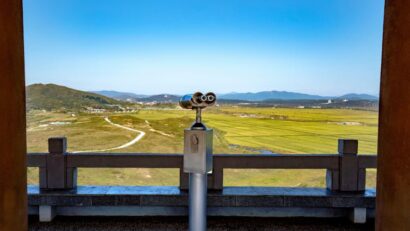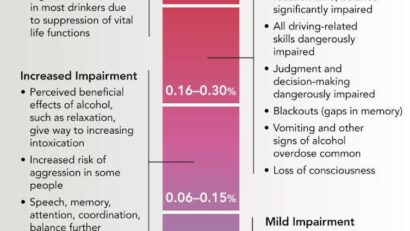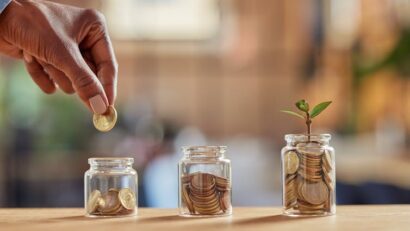
Pedro Sánchez’s ‘letter to the citizens’ of Spain assessed by a political communications expert
In the era of social media and 24 hour news cycles, people expect instant, up to the minute information. However, Spanish prime minister Pedro Sánchez chose to announce a five day pause in his duties via a lengthy four page letter. He will use this time to reflect on whether he will remain at the head of Spain’s government following a corruption investigation being opened into his wife, Begoña Gómez.
In doing so, he has sparked a crisis of government in which he already has the upper hand, controlling both the timing and the agenda of political debate.
As expected, the announcement dominated the front pages of Spanish newspapers, and hit the headlines in many international media outlets. Once again, Sánchez has made himself the epicentre of public opinion.
His missive is not a love letter, nor does it strike the melancholy tone of a person on the verge of quitting. While it does mention his love for his wife, and he did seem genuinely upset in the parliamentary session in which the investigation into his wife was revealed, the letter is filled with epithets directed at the far right and other political adversaries, all of whom have contributed to the current parliamentary scrap.
Spain is living in divided, polarised times. Half the country will most likely see the letter as an act of desperation: with the writing on the wall, Sánchez is choosing to bow out instead of being unceremoniously ousted. The other half will speak of the injustices of “lawfare”, and of the right wing media getting carried away with itself.
Though Spain has ceased to be a formally two party system, there are still two clearly defined poles in society. This division hampers society’s ability to interpret political situations as a whole, and complicates the issue of trust and support for institutional justice systems.
A master of suspense
Sánchez is a risk taker, as proven by his daring move in 2023 of bringing national elections forward by 5 months. Few can match his capacity for suspense and catching his enemies off guard, but his audacity is measured: he is not one for leaps into the unknown.
One possible explanation for his most recent move could be that he knows the newly opened investigation is based on shaky or fabricated information, meaning he can cause a stir, play the victim and mobilise those around him before reemerging, triumphant, on Monday. The alternative is that he plans on resigning, leaving Spain to face the possibility of yet another round of elections.
Either way, these events will take place right at the start of the Catalan election campaigns in May, and only 40 days out from the European elections in June.
Setting the agenda: the media’s influence on public opinion
The media’s impact on electoral behaviour has been studied for decades. Early on, it was believed that the media controlled public attitudes directly, much like a syringe injecting information and ideas under people’s skin.
People then came to believe that the media’s had little effect on electoral behaviour and citizens’ opinions, as people would limit or filter their own media exposure, or consume media based on pre-existing biases.
We now understand that mass media does not directly dictate the public’s attitudes. Instead, it indirectly influences them, defining the boundaries of public discussion by prioritising certain topics. This is known in communication theory as “agenda setting”.
By influencing what is relevant and what is not, the media can highlight or silence certain topics, giving them control over public discussion, debate and opinion. They do not tell people what to think, but by illuminating certain issues and hiding others, they tell people what to think about.
The media therefore acts as a spotlight: if certain figures are highlighted, people focus on them and think about them. This theory was developed by Maxwell McCombs and Donald Shaw, who identified that in choosing and displaying news, journalists and editors play an important role in shaping political reality. When consuming media, readers and viewers learn more than information about a given topic: they also learn how much attention and priority to give that topic based on the amount of information in a news item, and how many seconds of video or lines of newsprint are dedicated to it.
Agenda setting plays a fundamental role in political campaigns. It influences what the public considers important, the ranking of issues, the visibility of key actors, and thus their perceptions of the candidates and the political issues at stake.
Shaking things up with a view to the next elections
The mark of a successful political leader is the ability to steer media attention towards their own messages and priorities. It is likely, for example, that Sánchez’s actions, which are keeping the country (and its institutions) in thrall, will end up drawing attention to Catalan Socialist Party candidate Salvador Illa in the upcoming regional election campaign, though elections in the region have their own set of unique dynamics. Indeed, opinion polls have already shown a sharp uptick in Illa’s vote share in recent days.
In the same vein, Sánchez’s headline-grabbing hiatus may raise his own profile as president of Socialist International in European elections, where the right is poised to make significant gains.
Sánchez has been a prominent leader, and has been widely attacked by his political opponents. However, these attacks have had the unintended effect of making him the centre of attention, allowing him to set the agenda and guide public debate and perceptions. For Sánchez, what people say about him is neither here nor there: the amount that is said about him is far more important.
Campaign managers take great strides to put their candidates centre stage, and a controversial candidate makes this easy. Spain is currently facing two very important sets of elections in Catalonia and the European parliament. Influence over both will depend on candidates’ abilities to present and manage the elections as a simple dilemma: “Pedro Sánchez. Yes or no?” Läs mer…








